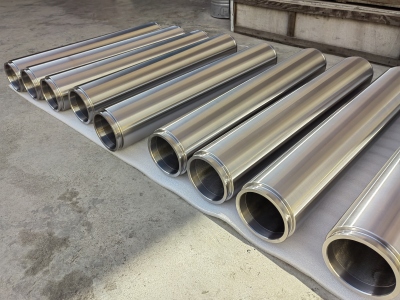Description
Étendue de la fourniture pour le groupe Aviation
Pièces forgées, barres rondes, plaques d'acier, anneaux, tuyaux sans soudure, plaques d'acier/courroies d'acier, capillaires, matériel de soudage de fils, n'hésitez pas à nous contacter !
1. Introduction to Hastelloy B-2 Materials
Hastelloy B2 is a solid solution reinforced nickel-molybdenum alloy that is significantly tolerant to reducing environments such as hydrogen chloride gas, sulfuric acid, acetic acid and phosphoric acid. Molybdenum is the main alloying element that provides significant corrosion resistance to the reducing environment. This nickel steel alloy can be used in a welded state because it prevents the formation of grain boundary carbide precipitation in the welding heat-affected zone.
2. Chemical composition of Hastello B2
| alliage | % | Ni | Chrome Cr | Fer Fe | Carbone C | Manganèse Mn | Silicium Si | 铜 avec | Stone Mo | Cobalt Co | Phosphore P | Soufre S |
| Hastelloy
B-2 |
Valeur minimale | marge | 0.4 | 1.6 | – | – | – | – | 26 | – | – | – |
| Valeur maximale | 0.7 | 2.0 | 0.01 | 1.0 | 0.08 | 0.5 | 30 | 1.0 | 0.020 | 0.010 |
3. Physical properties of Hastello B2
| densité | 9.2g/cm3 |
| Point de fusion | 1330~1380 ℃ |
Valeur minimale des propriétés mécaniques des alliages à température ambiante :
| État | Résistance à la traction Rm N/mm | Limite d'élasticité RP0.2 N/mm | Elongation A5 % |
| État de fusion solide | 690 | 310 | 40 |
4. Hastello B2 material characteristics
- Control the minimum content of iron and chromium to prevent the generation of Ni4Mo in β phase
- Excellent corrosion resistance to reducing environment
- Excellent resistance to corrosion of medium concentrations of sulfuric acid and many non-oxidizing acids
- Very good anti-chloride ion reduction stress corrosion cracking (SCC)
- Excellent resistance to corrosion of various organic acids
- Hastelloy B-2 is a face-centered cubic lattice structure.
5. Hastello B2 application field
It has a wide range of applications in the fields of chemistry, petrochemical, energy manufacturing and pollution control, especially in industries such as sulfuric acid, hydrochloric acid, phosphoric acid, and acetic acid. It is not recommended to use in environments where trivalent iron and divalent copper salts exist, because these salts can cause corrosion and damage quickly. When hydrochloric acid comes into contact with iron and copper, it will react with it to form trivalent iron and divalent copper salts.

